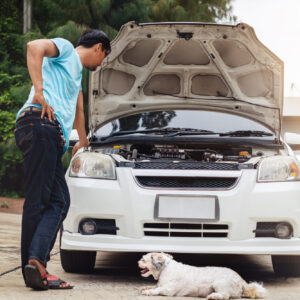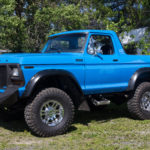When modifying your vehicle’s suspension, it’s important to understand roll center. This unseen point is key to your vehicle’s maneuverability. In the case of suspension height modifications, understanding it is also a matter of safety. Join us as we take a look at what your vehicle’s roll center is, how to find it, and what it does.
What Is Roll Center?
The roll center is an imaginary point in space around which the car body rotates. When your vehicle shifts from side to side, it pivots around this point. There are usually two roll centers in your vehicle, found around the front and rear suspension.
If you want to visualize your vehicle’s roll center, look at it from the front or rear and imagine it rocking side to side as it takes a corner. The point it rotates around is the roll center. To determine your vehicle’s roll center, you’ll need to do a little geometry, which we’ll go into a little later on in this article.
Reasons For and Against Tinkering With Your Vehicle’s Roll Center
One reason enthusiasts lower their vehicle’s ride height is to lower its center of gravity, which helps the vehicle lean or roll less when it corners. This is usually done by fitting lowered springs or aftermarket coilover suspension to the vehicle.
However, lowering the vehicle’s center of gravity will also inevitably alter your vehicle’s roll center. Doing this without properly understanding what you’re doing can lead to disastrous effects. After all, suspension engineers worked hard to design your vehicle so its roll center sits exactly where it would be the most beneficial, which is often as close to the center of gravity as possible. You need to keep an eye on where both the roll center and center of gravity are to keep your vehicle stable throughout the modding process.
Determining Your Vehicle’s Roll Center
To more concretely visualize your vehicle’s roll center, let’s make use of some geometry. For this example, we’ll assume your vehicle is equipped with MacPherson struts. Take a photo of your vehicle from the front or back and draw a vertical line through its center.
After drawing the first line, draw a line through where your vehicle’s inner and outer control arm joints are. Extend the line inward from the tire. The angle of your control arms impacts exactly how your vehicle rolls, so this line indicates the anchor for the roll center.
Next, draw another line perpendicular to your vehicle’s strut axis, extending it until it meets the line from the control arm. Remember that struts typically lean towards the center of your car. Having a strut setup other than the normal MacPherson setup would affect the roll center and thus the line. Likewise, as the struts move while you drive, this line shifts, affecting both the roll center and the center of gravity.
Repeat all the steps above for the other side of the suspension, revealing two instant centers beyond the vehicle’s tires. Draw the final two lines from the center of the tires on either side to these instant centers. The roll center is located exactly where those last two lines intersect. It shifts and changes as the car leans and the suspension moves.

Roll Center Position Effects
Different roll center positions affect the vehicle in different ways. For instance, if the roll center and center of gravity are at exactly the same point, there won’t be any rolling moent at all and no rolling effect. The suspension links take all the lateral force directed at the center of gravity. Many automakers prefer to have the roll center as close to the center of gravity as possible, to reduce roll and make the vehicle more maneuverable around corners.
If the roll center is below ground level, the inner wheel will be loaded while the outer wheel is unloaded when the vehicle turns a corner. This is the opposite of how a vehicle handles normally, where the outer wheel is loaded and the inner wheel is unloaded while cornering. At the same time, if the roll center is at ground level, there won’t be any non-rolling moments. The suspension links won’t take any of the lateral load transfer, and the rolling effect will be much more pronounced.
Roll Center Adjustments: Good or Bad?
Modifying a vehicle’s height, which changes the roll center, is more of a positive change when lowering it. But if you’re instead lifting a vehicle, you’re negatively impacting the chance of rollovers.
Because lowering your vehicle’s suspension lowers the center of gravity and affects the roll center, you can see how the roll center could potentially fall either below or at the same height as ground level. Having the roll center that low would impact your vehicle’s handling since your vehicle’s roll center is usually meant to be as close as possible to your vehicle’s center of gravity. Lowering your vehicle’s height does come with advantages, including being able to figure out your vehicle’s roll center easier, but it has to be done right.
You can see now why it’s important to note the roll center of a car when making adjustments. So before you make any drastic changes, check and double-check your roll center geometry and see how lowering the suspension and the center of gravity will affect it.
Any information provided on this Website is for informational purposes only and is not intended to replace consultation with a professional mechanic. The accuracy and timeliness of the information may change from the time of publication.


















